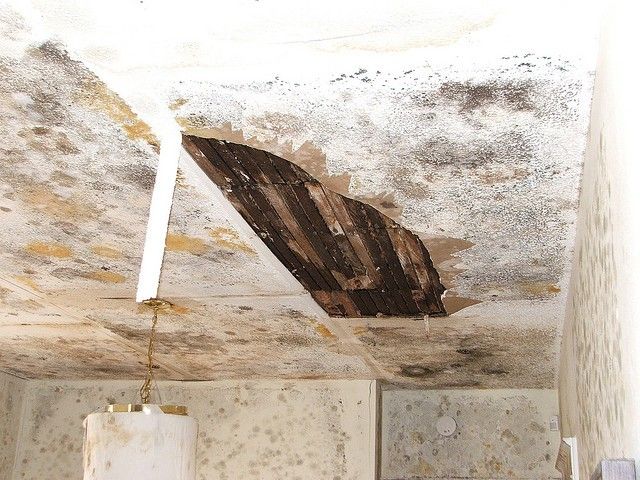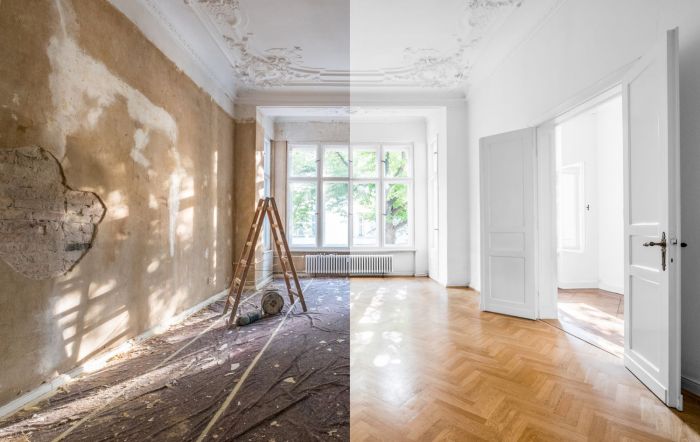
Many builders consider the roof of a building to be equally as important as its foundations. A roof needs to be water-tight in order to prevent a wide range of problems, and it needs to be well-maintained throughout its lifespan. However, roofs are subjected to the elements on a daily basis, and they will inevitably develop problems over time. Only by regularly inspecting roofs can property-owners ensure that small problems do not develop into major structural issues. Unfortunately, the first sign of a defective roof is a leak or areas of damp within the building, and the cost of repair at that point becomes significantly higher. Anyone can perform some basic checks on a roof, but there is some important advice that should be followed when doing so.
The Tell-Tale Signs of a Leaking Roof
There are several potential symptoms of a leaking roof, but most of them can be caused by factors other than the roof. However, spotting these problems within a property will provide a starting point for further investigation. One of the most common symptoms of a leaking roof is mold. Mold often forms on walls and ceilings as a result of condensation, but on rare occasions it may be the result of water finding its way into the building through a hole in the roof. The sagging of ceilings may also indicate a defective roof, and its location will provide a starting point for an investigation on the roof itself. Some buildings will experience more subtle symptoms such as damp spots on the walls and ceilings. Many roof leaks are small, and they create a gradual build-up of problems over time. The property may be suffering from premature heat-loss, or there may be a slightly strange smell emanating throughout the property. While these symptoms do not necessarily mean a roof is leaking, a visual inspection will either confirm the problem or necessitate further investigation. A particularly bad leak can, in some rare cases, lead to the undermining of foundations.
Areas on the Roof to Check for Leaks
Once on the roof, there are a few key areas to check. Skylights are notorious for causing small leaks, as many of them are fitted incorrectly. Chimneys are also a common source of a leak. All chimneys that are in use should be lined in order to protect the structure from incessant attack by toxins and gases. Other areas that should be inspected include B-vent flashings, furnaces, wall-stop flashings and any low spots on the roof. Of course, many leaks will be immediately obvious, and their severity can dictate whether a quick-fix or a large-scale repair is required.
How to Check the Condition of a Roof
When a roof is suspected of leaking, confident home-owners can perform a number of visual checks in order to ascertain the location and extent of the leak. However, those in doubt should contact a local builder to inspect the roof instead. Those who attempt the job themselves should do so with extreme caution, as some rafters on roofs will not be strong enough to support the average weight of a person. There are some excellent roof ladders available in good hardware stores that allow for the safe inspection of roofs. A leak will often lead to tiles and slates becoming loose; severe leaks can result in them becoming completely detached. Sagging or blocked gutters may also be an indication of a long-standing leak, and there may also be vegetation growing in the area. Serious damage will be easy to identify, and a quick visual inspection may be all that is required to diagnose a problem. Loose or cracked brickwork and mortar will usually signify that a leak has been causing damage for some time. Parapet walls and chimneys may start to lean quite badly over time, and nothing short of hiring a professional builder will reverse this problem. A flat roof should be checked for rips and holes in the covering, areas of moss and pools of stagnant water at its lowest points.
Repairing a Roof
Regular preventative maintenance of a roof will identify small problems which will be relatively easy to fix. Flat roofs can often be repaired with special repair kits bought from most hardware stores. They contain fixative agents, tape, a knife and specially-formulated fillers, and the process is usually straightforward. Storms and windy weather can cause damage to shingles, but they can often be repaired with roofing cement and aluminum flashing bought from a hardware store. Small repairs may involve the replacing of a loose tile or slate, and this is sometimes a job that can be completed in a matter of minutes. Many leaks occur around loose or exposed nails, and repairing them is simply a matter of removing and replacing the offending item. Leaks are also common around joins and joints. For example, areas where chimneys, vents and wall joints meet will be prone to developing leaks over the course of time. In some cases, a repair may be as simple as resealing the affected areas; however, large-scale repairs are often necessary when a leak has been left to inflict damage on rafters, walls and the foundations of a buildings. In cases such as these, only a specialist roofing contractor will be able to remedy the problem permanently.
Lewis Fortes is an independent contractor. In his spare time, he enjoys writing about home improvement and home repairs. For more information about roof repairs, click here.

Roofers at work. by StartAgain, on Flickr

P1000368.JPG by globalreset, on Flickr













